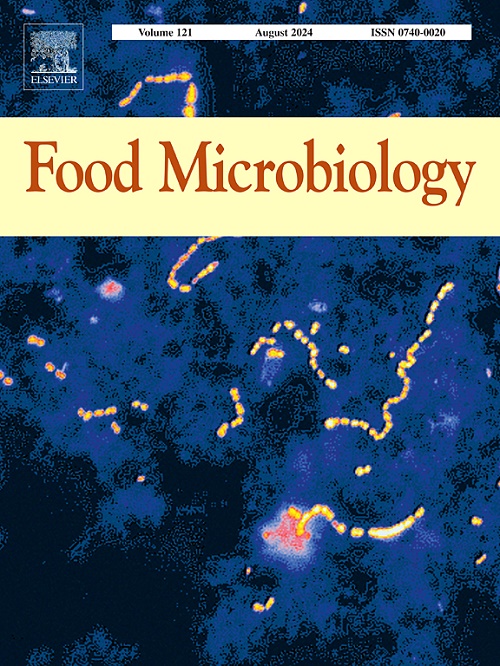酿酒酵母HL10和HL17降解组胺和酪胺的特性及其在葡萄酒发酵中的应用
IF 4.5
1区 农林科学
Q1 BIOTECHNOLOGY & APPLIED MICROBIOLOGY
引用次数: 0
摘要
红酒中含有丰富的组胺和酪胺,对消费者的健康构成威胁。本研究通过降解动力学、酶活动力学、抗逆性和酿酒性能评价,选择了具有较强降解组胺和酪胺能力的酿酒葡萄球菌HL10和HL17。结果表明,HL10和HL17在模拟培养基中对这两种胺的降解能力为47 mg/L,组胺和酪胺的降解动力学主要与单胺氧化酶和二胺氧化酶的活性有关。与商品酵母相比,单独接种HL10和HL17降低了悲红和梅洛葡萄酒的乙酸、组胺、酪胺和总胺水平,提高了酒中己酸、乙酯、辛酸、乙酯和苯乙醛(OAV >1.0)的含量,增强了酒的果香和花香特征。这些结果证明了HL10和HL17在降低生物胺、改善葡萄酒香气典型化和复杂性方面的潜力,这对高安全性和高品质葡萄酒的工业化生产具有重要意义。本文章由计算机程序翻译,如有差异,请以英文原文为准。

The characteristics of histamine and tyramine degradation of Saccharomyces cerevisiae HL10 and HL17 and their application in wine fermentation
Histamine and tyramine are abundant in red wine and pose a risk to the health of consumers. In this study, S. cerevisiae HL10 and HL17, with great ability to degrade histamine and tyramine, were selected through degradation dynamics, enzyme activity kinetics, stress tolerance, and winemaking performance evaluation. Results revealed that HL10 and HL17 exhibited the ability to eliminate >47 mg/L of these two amines in must simulated medium, and the dynamics of histamine and tyramine degradation were mainly related to the activities of monoamine oxidase and diamine oxidase. Compared with the commercial yeast, HL10 and HL17 inoculated individually decreased levels of acetic acid, histamine, tyramine, and total amine, as well as increased the contents of hexanoic acid, ethyl ester, octanoic acid, ethyl ester, and benzeneacetaldehyde (OAV >1.0) of Beihong and Merlot wines, enhancing their fruity and floral characteristics. These results demonstrated the potential of HL10 and HL17 in reducing biogenic amines and improving the aroma typicality and complexity of wines, which is of great significance for the industrial production of wines with high safety and quality.
求助全文
通过发布文献求助,成功后即可免费获取论文全文。
去求助
来源期刊

Food microbiology
工程技术-生物工程与应用微生物
CiteScore
11.30
自引率
3.80%
发文量
179
审稿时长
44 days
期刊介绍:
Food Microbiology publishes original research articles, short communications, review papers, letters, news items and book reviews dealing with all aspects of the microbiology of foods. The editors aim to publish manuscripts of the highest quality which are both relevant and applicable to the broad field covered by the journal. Studies must be novel, have a clear connection to food microbiology, and be of general interest to the international community of food microbiologists. The editors make every effort to ensure rapid and fair reviews, resulting in timely publication of accepted manuscripts.
 求助内容:
求助内容: 应助结果提醒方式:
应助结果提醒方式:


